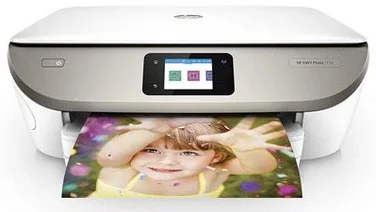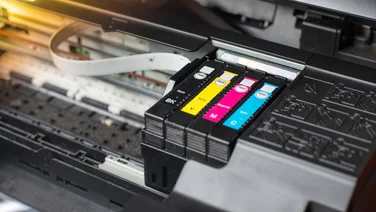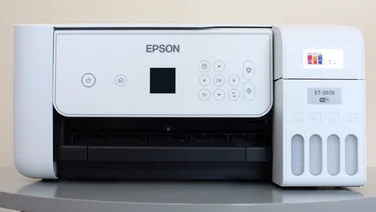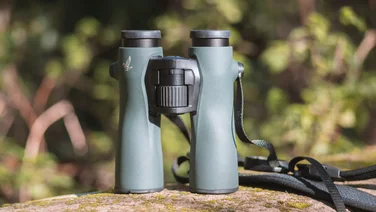To help us provide you with free impartial advice, we may earn a commission if you buy through links on our site. Learn more

- Outstanding image quality
- Sophisticated autofocus
- Long battery life
- Some functions are awkward to access
- Slow shot-to-shot times in live view mode
The D5600 is Nikons latest consumer-oriented SLR, designed for people who are serious about photography but who arent necessarily aspiring professionals. Features such as a 39-point autofocus system, articulated touchscreen, built-in Wi-Fi and microphone socket differentiate it from the entry-level Nikon D3400. You dont get the Nikon D7500s larger viewfinder, 51-point autofocus and 8fps burst shooting, but then the D5600 doesnt cost £1,300.
READ NEXT: The best SLRs, CSCs and compact cameras in 2017
Nikon D5600 review: Controls and layout
This is one of the smallest SLRs on the market but theres a substantial handgrip to ensure a secure fit in the hand. The 3.2in LCD touchscreen is bigger than the usual 3in screens, although this is more likely to be appreciated while reviewing shots rather than capturing them since most people will default to using the viewfinder during shooting. The 820-shot battery life is way ahead of rivals at this price.
There are lots of buttons dotted around the camera but this is not my favourite control system. The four-way pad is permanently assigned to autofocus point selection, but its quicker to adjust this by swiping the screen while composing shots with the viewfinder a handy feature you have to enable in the menu as its not switched on by default. There are labelled buttons for zooming into and deleting photos but theyre redundant during normal shooting and cant be reassigned. The zoom out button doubles as a Help function, giving handy, context-sensitive tips.

There are no dedicated buttons for white balance, JPEG/RAW quality, focus mode or metering mode. These are available via the “i” button, which instead reveals a quick-access menu of 14 functions on the touchscreen. The physical Fn button is assigned to ISO speed by default a sensible choice but its not possible to toggle Auto ISO on and off here. This requires a trip to an obscure submenu.
With Auto ISO enabled, the LCD screen shows the current ISO speed but, annoyingly, this information doesnt appear in the viewfinder. Theres no option to show exposure information when reviewing shots, either. As a result, its hard to keep an eye on the ISO speed when shooting using Auto ISO and the viewfinder.
Drive mode has its own button but it took me a while to find it, tucked away around the front of the camera. This includes a self-timer option, but choosing between a ten-second self-timer (for group self-portraits) and a two-second timer (for avoiding shake on tripod-mounted shots) requires another trip to the main menu. The self-timer resets after each use, too, which is a nuisance for repeated tripod shots such as macro or studio photography. Admittedly, the camera’s Exposure Delay Mode function serves the same purpose and can be selected in the Shooting > Display submenu, but that means the two-second delay function seems largely redundant in its current form.
Ultimately, these issues with the controls are niggles rather than major inconveniences and routine operation is generally comfortable and straightforward. Theres room for improvement, though.

Nikon D5600 review: Connectivity
SnapBridge support is the main almost only new feature in the D5600 compared to the D5500 that it replaces. This uses a combination of Bluetooth and Wi-Fi to communicate with a smartphone or tablet. Bluetooth maintains a constant connection, handling JPEG transfers and Wi-Fi is only invoked when remote operation is required.
NFC is included, too, to speed up initial set-up and this worked flawlessly with an Android phone in my tests, even down to syncing the time from phone to camera. From then on, 2-megapixel copies of photos were transferred within seconds of being captured, without needing to select it actively on either device even after the camera was switched off.
This inevitably will have an effect on battery life but its a great feature for being able to review shots on a bigger tablet screen, perhaps on your journey home. Depending on your devices cloud sync settings, photos should also then appear in your online photo album automatically, too.
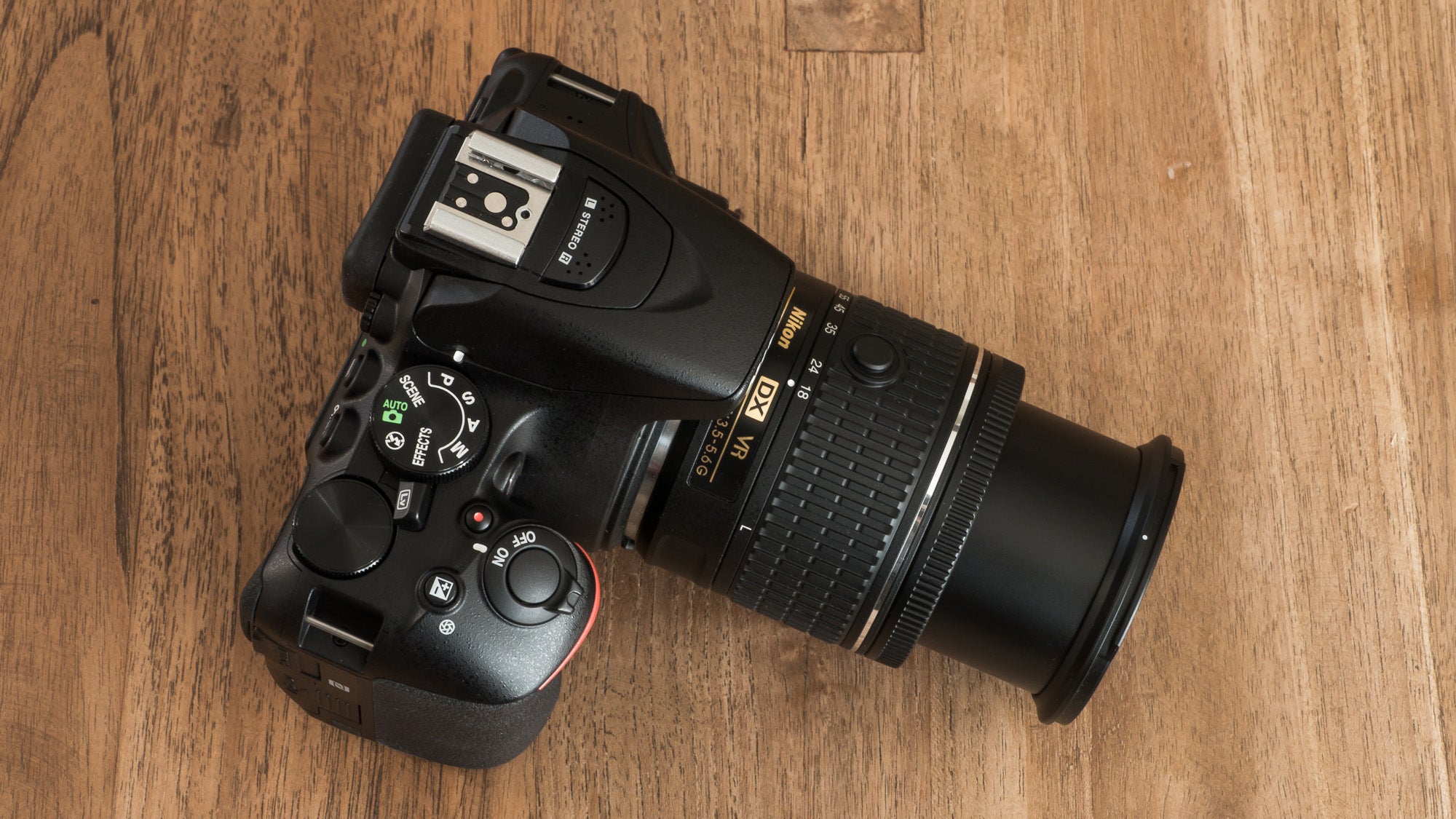
However, I did experience problems with this. After a couple of days the automatic link was lost and it proved extremely tricky to re-establish it. The camera repeatedly told me it had successfully paired but the app reported it had failed. I also had difficulties connecting to an iPad, which lacks NFC so requires manual Bluetooth pairing before it can proceed. User reviews of the apps suggest that this kind of experience isnt uncommon.
Nikon D5600 review: Performance and autofocus
Elsewhere, general performance is in line with the Nikon D5500. The D5600 will capture a shot every 0.4 seconds in normal use and this slows to 2.9 seconds when composing shots using the LCD screen. Its a common issue for SLRs but the Canon EOS 750D is much faster. Continuous shooting was at 4.8 shots for 17 JPEGs or eight RAW frames before slowing to the speed of the card.
The 39-point autofocus sensor and Nikons 3D Tracking feature means the camera can track moving subjects around the frame with a reasonable degree of reliability. This camera doesnt have the sustained performance required for serious action photography but its still handy for shooting moving subjects such as children. The generous number of autofocus points also means you can focus precisely on the subjects eyes without having to focus, recompose the scene and then shoot.
Nikon D5600 review: Video quality
Videos are recorded at 1080p resolution at frame rates up to 60fps. Theres a choice of automatic or manual exposure, but not shutter- or aperture-priority. However, the maximum recording time has increased from 10 to 20 minutes for 50fps and 60fps clips.
Picture quality is respectable with flattering colours and low noise, but details arent quite as crisp as from the best 1080p SLRs and, inevitably, it’s far behind 4K cameras output.
Theres no continuous autofocus for video, either. Updating focus requires either a half-press of the shutter button or a tap on the touchscreen. This works pretty well, avoiding unnecessary focus hunting when your subject is relatively static, and the kit lens is responsive yet quiet.
Nikon D5600 review: Image quality
Image quality is the Nikon D5600s strongest asset. Its 24-megapixel sensor captures masses of detail and dynamic range, with remarkably low noise at fast ISO speeds. The kit lens pulls its weight, delivering sharp focus in the majority of test shots. Focus improves with the lens stopped down to around f/8 but thats typical for a kit lens. Otherwise, autofocus is reliable and the metering system takes tricky lighting conditions in its stride.

^ Rich colours, masses of crisp detail and an expertly judged exposure that captures the darkest and brightest parts of the image with aplomb (1/250s, f/8, ISO 100, 27mm equivalent)

^ Another great result with pixel-sharp details on the water lilies and reeds but the more distant trees look a little vague on close inspection (1/125s, f/5.6, ISO 100, 48mm equivalent)

^ This shot shows superb detail levels in the centre of the frame, which is only slightly softer towards the edges (1/250s, f/8, ISO 100, 63mm equivalent)

^ Shooting in the shade has pushed the ISO speed up to 500 here but theres barely any hint of noise or noise reduction artefacts (1/100s, f/5.6, ISO 500, 82mm equivalent)

^ Image quality is holding together extremely well at ISO 2500 (1/40s, f/4, ISO 2500, 40mm equivalent)

^ Even shots at ISO 11400 look respectable (1/40s, f/4, ISO 11400, 37mm equivalent)

^ Automatic settings have handled this backlit scene well, with the shaded skin tones appearing smooth and detailed (1/50s, f/4, ISO 100, 39mm equivalent)

^ Skin and hair textures are a little grainy and soft at ISO 7200 but its a superb result (1/60s, f/5, ISO 7200, 60mm equivalent)
Nikon D5600 review: Verdict
In my review of the Nikon D5500, I found that the kit lens was the weak point in the image-quality chain, with a softness towards the edges of frames at narrow apertures and throughout the frame with the aperture wide open.
The D5600 uses the same kit lens but Im happy to report that this particular sample performed much better. Pricier lenses will inevitably deliver sharper results but on this evidence, you won’t necessarily need to replace it straight away.

^ The poor focus from the D5500s kit lens we saw two years ago wasnt evident in the same lens that was sent out with the D5600
Elsewhere, the Nikon D5600 isnt much different to the D5500 it replaces and compared with its main rival, the Canon EOS 750D, theres also little difference. The Nikon holds the edge for image quality with slightly less noise at fast ISO speeds, whereas the Canon 750D has more elegant controls and faster live view performance.
The D5600s 39-point autofocus sensor beats the 750Ds 19-point sensor, although the recently announced EOS 800D (review coming soon) ups this to 45 points. Ultimately theres no clear victor so if youre already a Nikon user, or tempted to become one, theres nothing to hold you back.


